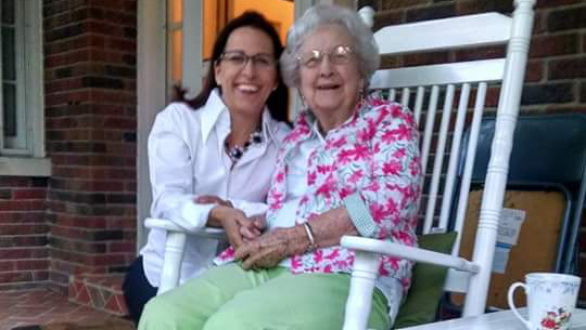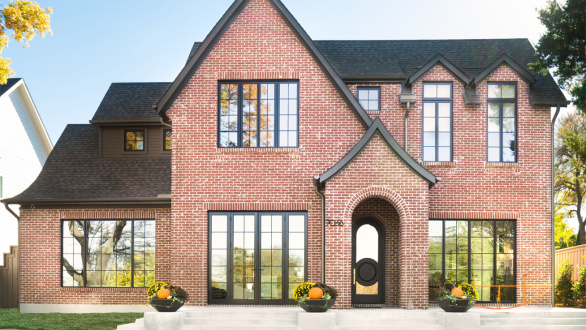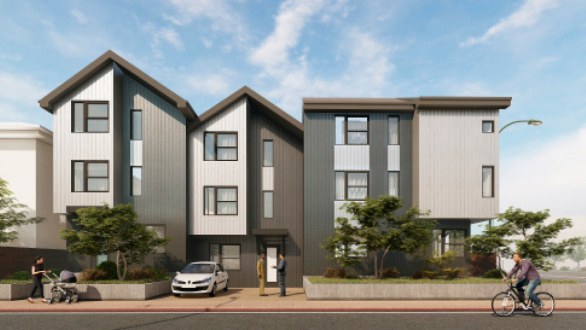Multiple generations once lived together to save money, help grandparents age safely, and curtail loneliness. That tradition waned in the U.S. as families accumulated wealth and each generation sought independence.
Now, the trend is back, with a record 64 million—or 20% of the U.S. population—living under the same roof in 2016, according to a Pew Research Center analysis. Even in markets where it’s more rare, the expectation is it’s only a matter of time before it catches on, says Brandon Hjelseth, team leader and broker associate with RE/MAX Northwest, REALTORS®, in Gig Harbor, Wash., just south of Seattle.
The prime reasons families are coming together under one roof include “boomerang” children returning home, an older population living longer and wanting to age in place, and an economy requiring more than one paycheck. The overarching goal is to support one another, says commercial designer Mary Cook of Mary Cook Associates in Chicago.
According to the Pew report, 25% of Asian Americans, 23% of African Americans, and 22% of Hispanics live in multigenerational homes, in contrast with 13% of whites. But there’s a difference now from years past. More families talk openly about living together. It was once viewed as a verboten topic that suggested a family wasn’t affluent enough to afford independent or assisted care for their elderly members or a separate apartment for a grown child, says designer Lisa M. Cini, founder of Mosaic Design Studio. She brought her grandmother, who had Alzheimer’s disease, along with her parents and children into her Columbus, Ohio, home, primarily to ease stress. “When elderly parents or grandparents aren’t with you, there’s nonstop worry, and you sometimes have to drop everything and rush two hours away,” says Cini.
Amy Goyer, a family and caregiving expert for AARP and a speaker, consultant, and author, also asked her aging parents to move into her Phoenix home. After her mother died, her father remained through the course of his Alzheimer’s disease, and her sister and two nephews moved in with them for a year before moving into the house next door.
In order to make a multigenerational household work, homeowners need a floor plan that allows everyone to live together and apart, says real estate broker Linda Bright with Illustrated Properties in Palm Beach Gardens, Fla. She lives at The Country Club at Mirasol development, where some homes have separate casitas that can accommodate the needs of some extended families.
“The most important component is privacy,” says Cook. Rooms also need to be flexible as needs change. The good news is that many who embark on this journey find silver linings, such as having extra hands to help and avoiding expensive outside caregivers for older family members and young children.
“The best care is from family members who enrich lives and offer a history of knowledge, and it’s a great reason for multigenerational living,” says Jay Kallos, senior vice president of architecture at Ashton Woods Homes, an Atlanta-based homebuilder developing multigen options.
If you have clients who are searching for a property to accommodate multigeneration living, here are some tips you can share.
Floor Plans That Work Best
Several trends are emerging. Some people prefer to remain in their current home and make room for family members according to needs. Adjustments may be necessary, such as adding grab bars or a raised toilet seat in bathrooms, Goyer says. Others find moving to a more appropriate home—possibly one with an extra bedroom, bathroom, and sitting area for additional family members—works better. The key, says Goyer, is to provide adequate privacy for each generation.
She chose to remain in her existing Phoenix home, which had previously been her parents’ house before they moved to a senior community for three years. When they moved back, Goyer replaced a tub with a curb-free walk-in model that could accommodate a roll-in shower chair and an easy-to-use handheld shower head. She also added grab bars that could double as towel racks and chose a less slippery floor tile. She designed one sink to be at counter level to ease her dad’s back and one at seated level with open space underneath for a wheelchair, which her dad used in later years.
Cini and her husband and then-teenage children moved with her parents and grandmother to a larger home that offered greater flexibility. It required modest renovations, such as opening some doorways so there were fewer dead ends that would frustrate her grandmother, who had Alzheimer’s disease. They also made stairway landings larger and added night lighting. The household gained a bathroom and space to entertain.
While some multigenerational families like multiple kitchens or an additional kitchenette, their home has just one, which Cini considered an important gathering place where they could come together for meals. Cook says the best-shared kitchens have multiple prep stations so more than one person can work. She also recommends incorporating universal design tenets to accommodate older and physically challenged family members, as well as adjustable lighting with separate switches for flexibility.
Some families prefer to build a new home to meet their exact needs. Architect Eddie Maestri of Maestri Studio in Dallas designed a large new home for a client, a couple who accommodated the wife’s mother in her own 1,400-square-foot “apartment” within the house. She had her own master suite, office, kitchen with eating area, porch, back staircase (that also led to her grandson’s bedroom), and one-car garage. From the outside, the house appears a cohesive whole.
Home Builders Step Up
Home builders and developers are meeting the demand for multigenerational dwellings with a variety of apartments, condos, and single-family homes.
“The home building industry is much more conscious of this buyer and knows that each generation needs an away space so they can have friends over or calm down if problems arise,” says Jay Kallos of Ashton Woods Homes. His firm is developing plans that appeal to its wide customer base who seek single-family houses and townhomes priced from $200,000 to more than $1 million. Layouts vary, from a room that includes a refrigerator microwave, and access to a separate garage to some with dual master suites on different levels, separate exterior doors and stairs from the main living area to secondary quarters, and outdoor space.
Fortune International Realty, a full-service real estate firm in South Florida that also represents third-party development sales and rentals, has experienced strong sales in a luxury Miami condominium, the “5350 Park“ building. It is the first effort by Coral Gables, Fla., developer Codina Partners’ at offering two- and three-bedroom condos for multigen families with select units having an adjacent studio, complete with bathroom and private entry.
“The developer envisioned it being used for families or a rental,” says Daniel Guerra, vice president of sales at Fortune International. These building units also appeal to buyers because they’re located within the walkable, amenity-rich Downtown Doral master-planned community.
Kolter Homes, based in West Palm Beach, Fla., is developing its first multigen option at its 55-plus active adult community, Cresswind Charlotte, in Charlotte, N.C. Its first single-family home, to be completed by summer, sold quickly with a one-level, walk-out basement “in-law suite” that includes an open family room with a kitchenette, master suite, guest suite, patio, optional media room, and elevator to the first level, says sales manager Donna “Frankie” Franklin. “We’ve designated 30 sites that could accommodate similar homes,” she says. The community is scheduling programming specifically for this group, and the company expects its other 17 communities to offer similar options.
Rather than reinvent new plans, Meritage Homes is adjusting existing designs. In its Summit II community in Roseville, Calif., buyers can pick models with a guest bedroom or guest suite and flex space that could function as an office, den, dining room, or multigen gathering area, says Brian Juedes, vice president of product design. Although homes won’t include a separate kitchen, many offer the option of a larger kitchen with a nook, island, and adjacent great room to accommodate larger gatherings. All Meritage’s communities will offer some variation.
Riaz Capital, a development, construction, and property management firm in Oakland, Calif., is taking a different approach to meet demand with its affordable rental units in multifamily buildings and townhouses. Focused on buyers who need to pare housing costs, the firm delivers its “ABD Suites” that offer comfortable daily living but share larger communal spaces.
“We learned from our work as a traditional multifamily developer what residents were willing to pay for. Many didn’t want roof decks, parking garages, and gyms, which would raise expenses, but they do want nearby public transportation,” says Riaz Taplin, principal and founder.
Each of its 1,300 units under construction are suitable for multiple generations. Taplin expects demand for this type of housing to grow as single-income professionals become a larger proportion of the population and seek to cohabitate or care for family members while scaling back on housing costs.
How Generations Maintain Peace
Imagine living under the same roof with people whose dietary habits, noise preferences, and political leanings differ greatly—maybe even dramatically—from your own. It can be daunting. Therefore, it’s wise for multigenerational home shoppers to establish rules in advance, such as determining who does the grocery shopping and cooking, pays bills, or gets to use the living room at specific times.
Despite the potential obstacles, peace can prevail with the expectation that resolvable skirmishes will arise periodically. Goyer and Cini, who each undertook multigen living, found challenges mostly centered around food and meal times.
Goyer recommends that families have conversations before moving in together about each person’s potential deal breakers and how to resolve them. She remembers on one occasion, a family member told that her that she was making peanut and jelly sandwiches wrong. “I blew up, which led to conversations addressing boundaries,” Goyer says. On a more serious note, her nephews sometimes had a hard time living with their grandfather who had Alzheimer’s disease, but the family learned over time which tasks each person could handle, from helping him get out of bed to getting into a car.
If she started out again, Cini says she’d do some things a bit differently. “We were of the mindset that when problems arose, we would deal with them. But now I say it’s better to think, talk, and plan beforehand,” Cini says.
She was in her 40s, her parents were in their 70s, her grandmother in her 90s, and her kids were both teenagers when they moved in together eight years ago. One irksome issue was whose silverware to use. “We had three adult women in the house, each wanting theirs to be the one. We ended up using my mother’s since she was preparing most meals,” she says. The family divided up the grocery bill per person and shared other costs, such as utilities. Over time, they fine-tuned communications so that anyone not sitting down to a meal would let her mother know in advance.
The family also developed a set of rules about other relatives visiting, rather than letting them pop in. All in all, it turned out to be a blessing, especially for Cini’s children. “They loved having someone else ask about their day or fix them breakfast every morning. And they learned so many soft skills, such as helping their grandmother get in and out of a car or how to shake hands firmly and look straight into someone’s eyes.”
Cini learned about the importance of showing greater patience and not becoming irritable when her grandmother asked the same questions repeatedly. In fact, Cini came to believe so much in the multigenerational living concept that she is renovating a 10,000-square-foot home to offer a multigen-style short-term rental for other families to try before they decide to buy.
However multigenerational living is achieved, solutions can provide a positive return for families that understand and plan for everyone’s needs. “They can create a greater sense of family community,” says Bright.










